Together let’s tackle your family’s favorite cookie recipe… and make it healthy! In this post, learn the basics of giving your cookies a “real food makeover”, including what to do if you have food allergies or other dietary restrictions.
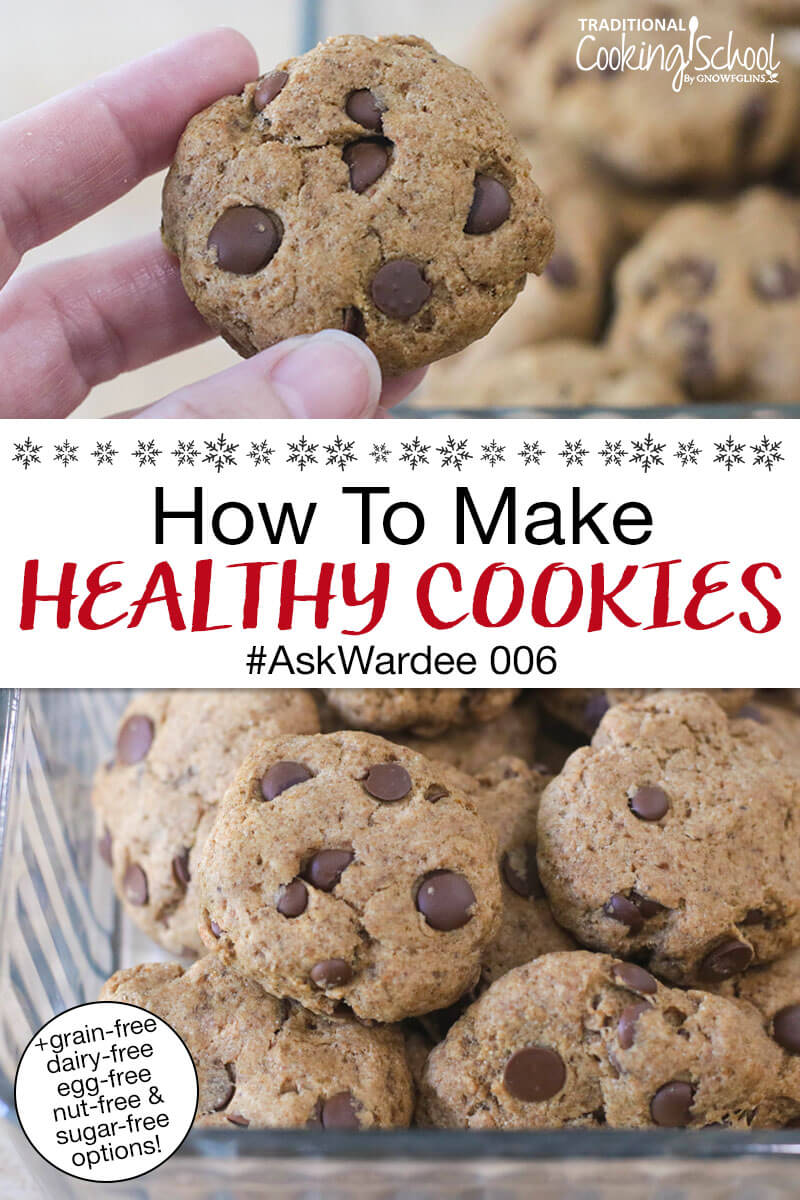
What better way to get in the Christmas spirit than by baking cookies for your friends and family?
They make the perfect homemade food gift!
Not just any cookies, though. They need to be yummy, healthy, and compliant with any dietary restrictions!
Maybe you have an heirloom cookie recipe passed down from your grandmother but it calls for ingredients like corn syrup and shortening. In this post, I’ll share some tips for giving conventional recipes a “real food makeover” so you can feel good about enjoying them again.
And if you’re looking for new cookie ideas, don’t worry. Here at Traditional Cooking School, we’ve built up our cookie recipe arsenal over the last 10+ years to include sugar-free, grain-free, gluten-free, dairy-free, nut-free, AND egg-free options!
Let’s get right to it!
Table Of Contents
How to Make Yummy AND Healthy Cookies
Subscribe to #AskWardee on iTunes, Stitcher, YouTube, or the Podcasts app.
The Question
Renee says:
“My 6-year-old son wants to know: how do I make cookies yummy and healthy?”
Let’s talk through some general ways to make your family’s favorite cookie recipe healthier…
3 Ways to Make Your Favorite Cookie Recipe Healthier
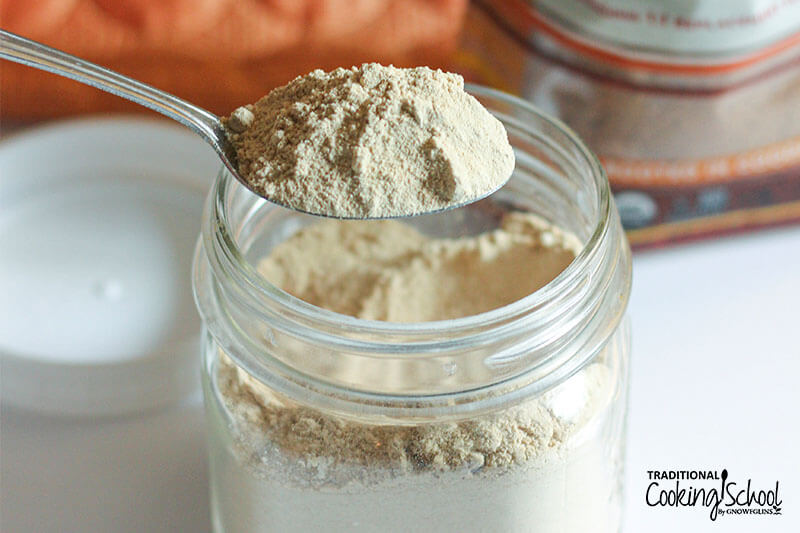
1. Reduce/Change The Sugar
This information is adapted from Melissa in this post: Real Food Makeovers For Your Holiday Recipes.
First, reduce the sugar. Most recipes can be cut be at least a 1/4 cup per 1 cup of sugar without anyone noticing the difference (and often, even more reduction goes without notice!).
Use honey instead. Try using honey instead of sugar, and since it’s sweeter, you can use less honey than you would sugar. Start by adding in half the amount and then adjust to taste. For every cup of honey you use, reduce the other liquids in the recipe by 1/8 cup or so. Don’t want to use up all your raw honey in baked goods? Then…
Use less refined, natural sweeteners. Like organic sucanat, rapadura, coconut/palm sugar, date sugar, maple sugar, maple syrup, or evaporated cane juice. If it’s dry (all but maple syrup), just use it cup for cup according to the recipe (or reduce it to taste).
If the recipe calls for powdered sugar, then whizz your dry sweetener in a blender until it’s finely textured (here’s how).
Substituting dry vs. liquid sweeteners. Now say you choose maple syrup and the recipe calls for a dry sweetener. Reduce the liquid in the recipe by 1/8 cup or so per cup of maple syrup. If the recipe calls for a liquid sweetener (such as corn syrup) and you’re using a dry sweetener instead, you’ll need to increase the liquid by about 1/8 cup per cup of sweetener. (These are all general rules — additional tweaking may be necessary.)
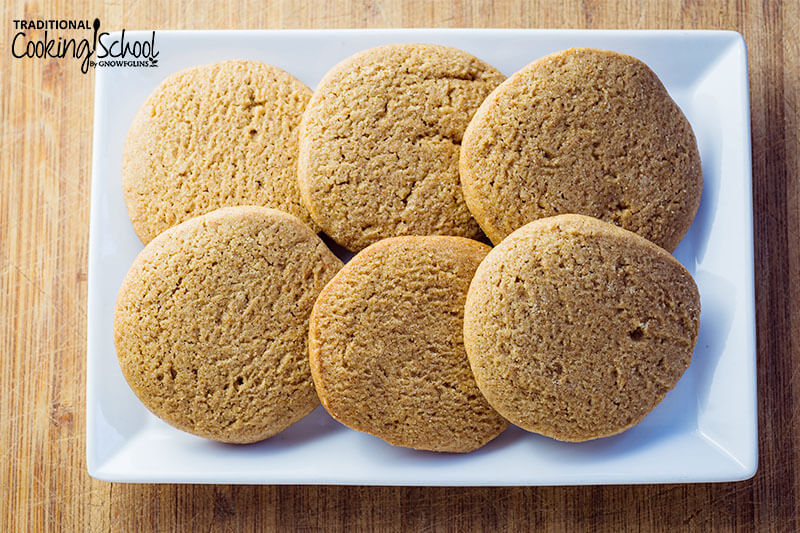
2. Switch To Healthy Fats
This information is adapted from Melissa in this post: Real Food Makeovers For Your Holiday Recipes.
Many recipes call for shortening, but regular shortening is based on genetically modified ingredients and is a highly processed trans fat that’s implicated in heart disease.
Thankfully, you can substitute any fat in a recipe with another — easily. In place of shortening, you can use real organic grass-fed butter, lard, or coconut oil.
For cookies, butter is best. Pie crusts and flat breads, like tortillas, make lard your new best friend. (Although for anyone following a low Vitamin A diet, lard and tallow are out due to high Vitamin A content.) Coconut oil is also great in pie crusts, but not so hot in cookies. (See below for more tips on using coconut oil.)
When baking, you can use applesauce or another puree (banana, for instance) in place of some of the fat or liquid in baked goods. This can help cut down on your costs, especially if you blend or can all of your applesauce. These give added flavor and moisture, too! If you are using raw applesauce, made by blending apples in a high-powered blender like the Vitamix, I would suggest letting some of the liquid drip out so your baked goods aren’t too wet.
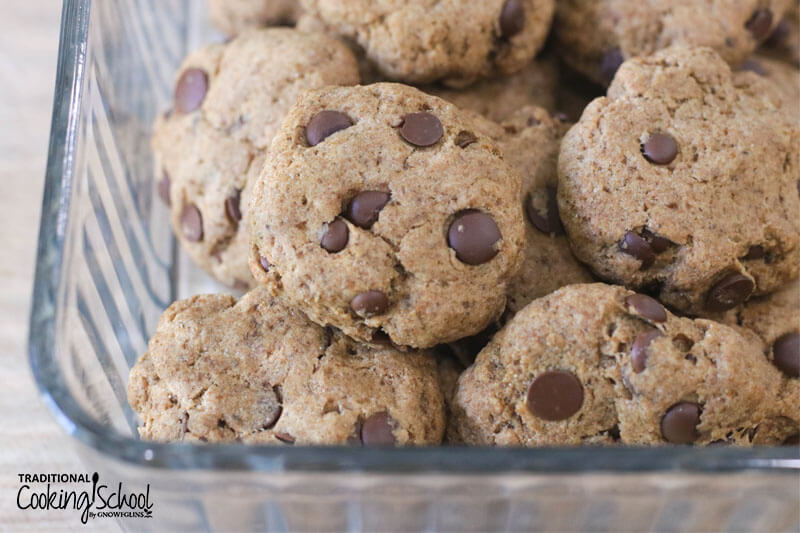
3. Prepare Your Grains
To help your cookies be both more nutritious and digestible, use traditional grain preparation methods like soaking, sprouting, or sourdough. In this case, sprouting is most likely the best and easiest way to make your existing cookie recipe healthier. This is because cookies don’t offer much liquid for soaking, and true sourdough cookie recipes that don’t call for any additional flour or require a souring time are rare. (However, we do have one sourdough cookie recipe!)
To incorporate sprouting, you buy or make sprouted flour (sprout grains, dehydrate, then mill into flour) and use that in the cookie recipe instead. I show you how to sprout grains in this post. This means, as long as you have sprouted flour, you can make any recipe as written and it is instantly more digestible than if you’d used regular flour.
Additionally, you can swap your wheat flour for ancient grains like einkorn or spelt. These have gentler forms of gluten and easier to digest starches. (For additional training with ancient grains including many recipes and baking tips, check out our Ancient Grains and/or Einkorn Baking classes here in our Eat God’s Way cooking program.)
Here are a few examples of sprouted spelt cookies!
- Homemade Peppermint Oreos
- Gut-Friendly Linzer Cookies
- Maple Cookies
- Sprouted Spelt Chocolate Chip Cookies from Lesson 7 of our Ancient Grains eCourse (pictured above)
Allergy-Friendly Options
Especially for those with dietary restrictions, perhaps the easiest way to make yummy, healthy, and allergy-friendly cookies is to start with tried and true recipes. Below you will find plenty of allergy-friendly cookies, plus some tips that you can use if adapting a non-allergy-friendly recipe.
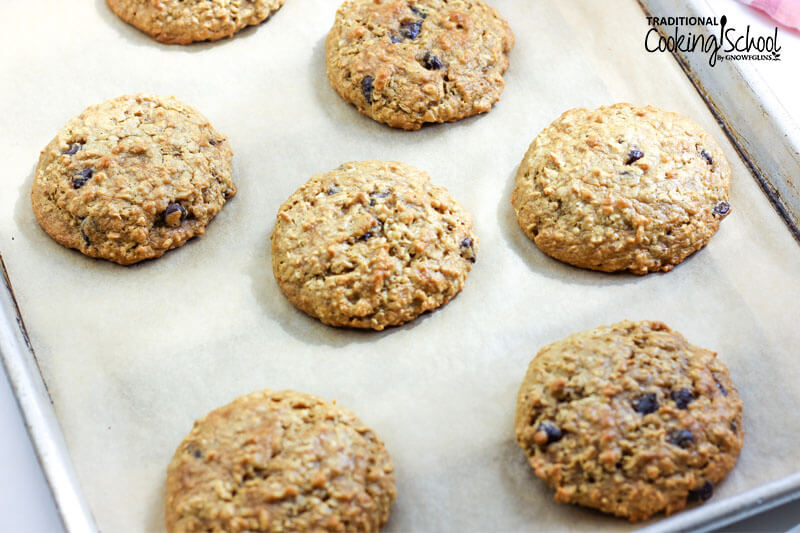
Gluten-Free
Perhaps the easiest gluten-free grain to utilize in cookies is oats! Make sure to choose certified gluten-free oats and you’re good to go.
And for the base flour of the recipe, use your favorite gluten-free flour blend (purchased or homemade). Most of the time, you can simply substitute this blend cup for cup in the recipe. If making your own gluten-free blend, it is better to use more flours in the blend, rather than fewer. This is because gluten-free flours have unique characteristics and flavors and your cookies will turn out better if each is diluted by the others.
Usually purchased gluten-free blends will have more refined and higher starch flours such as potato starch, tapioca starch, or arrowroot starch. Homemade blends depend on which flours you include, whether they are high starch or not. While it is true that the more refined blends will yield better results, they might not be the best option for those watching their blood sugar levels.
Here are a few gluten-free cookie recipes:
- Healthy Chocolate Chip Breakfast Cookies (soaked, gluten-free, prebiotics!)
- Regina’s Healthy Oatmeal No-Bake Cookies
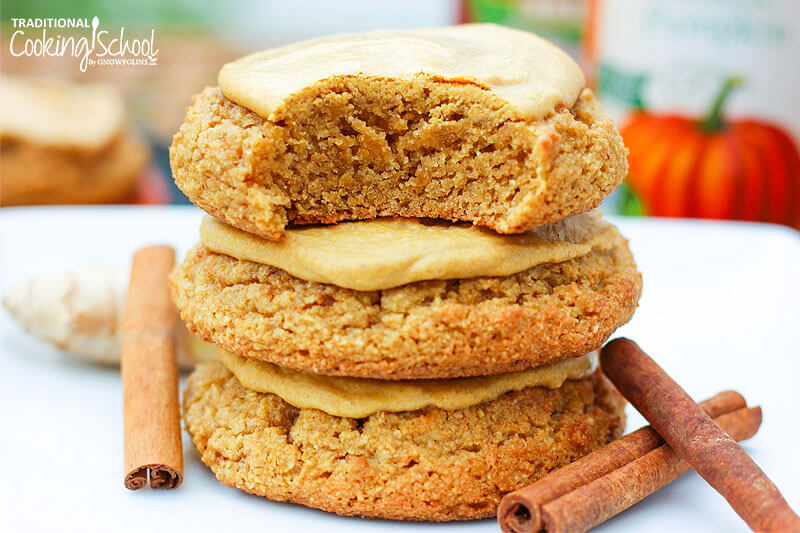
Grain-Free
Consider grain-free cookie recipes such as those based with nut/seed mash or flour (like in the Eat Beautiful eCookbook) or based with coconut.
Grain-free flours can be tricky, but I have a few resources for you: here are tips for baking with almond flour and baking with coconut flour.
Here are a few more grain-free cookie recipes:
- Paleo Double Chocolate Chip Cookies (also dairy-free and nut-free)
- Paleo Sugar Cookies With Pumpkin Glaze
- Allergy-Friendly Cookies {1 Dough, 16+ Variations!}
- No Bake Coconut Snowball Cookies
- Allergy-Friendly White Chocolate Peppermint Snowballs
- Spicy Chocolate Gingersnaps
- Chewy Chocolate-Coconut Cookies — Oh-So-Dippable
- GAPS Date Cookies (also sugar-free)
- Easy Almond Cookies
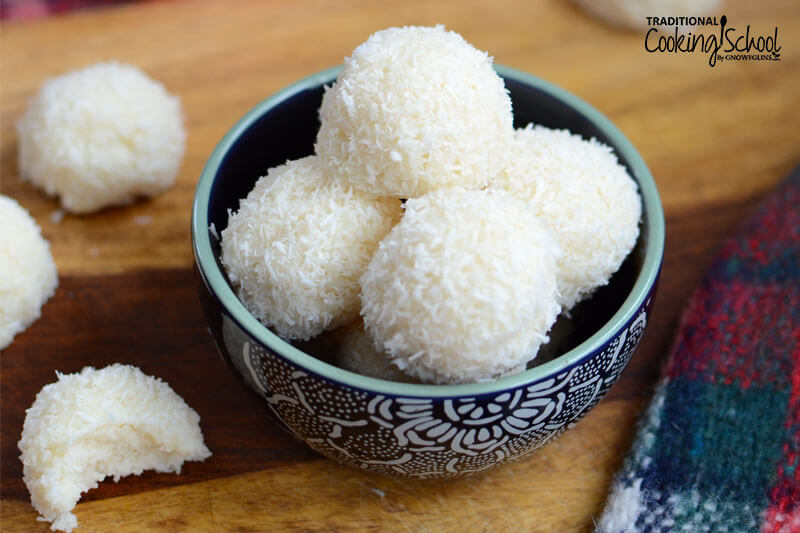
Dairy-Free
Coconut oil has a lower melting point than butter and when you use it in cookies, they spread out really thin. However, a cookie is a cookie, and if it still tastes good, is there really a problem? 🙂
If you’d still like to give it a go, I recommend using less coconut oil in any recipes written for shortening. For example, if a recipe calls for 1 cup of shortening, I’d use about 3/4 cup coconut oil.
Here are a few recipes that were written to be dairy-free from the get-go!
- No Bake Coconut Snowball Cookies
- Allergy-Friendly White Chocolate Peppermint Snowballs
- Chewy Chocolate-Coconut Cookies — Oh-So-Dippable
- Nourishing Traditions “Macaroons” (also grain-free)

Egg-Free
If wanting to replace eggs in a cookie recipe, there are a few options: ground flax seeds, ground chia seeds, gelatin, or psyllium seed husk (whole, NOT powder).
These egg substitutes can be used 1:1 in recipes that call for regular eggs:
- flax egg: 1 tablespoon ground flax seeds + 3 tablespoons water
- chia egg: 1 tablespoon ground chia seeds + 3 tablespoons water
- gelatin egg: 1 tablespoon gelatin + 1 tablespoon hot water; whisk to dissolve the gelatin, then add 2 tablespoons water of any temperature and mix
- psyllium egg: 1 teaspoon psyllium seed husk + 3 tablespoons water
In each case, mix together the egg replacement with the desired amount of water (exception is gelatin). Stir and let sit for up to 5 minutes to gel. Then proceed with the rest of the recipe. You may have to experiment with the different egg replacements to find the right fit (flavor, texture, etc.) for your recipe.
In the meantime, here are cookie recipes that are already egg-free!
- 44 Egg-Free Cookies That Are Crazy Good
- Spicy Chocolate Gingersnaps
- Chewy Chocolate-Coconut Cookies — Oh-So-Dippable
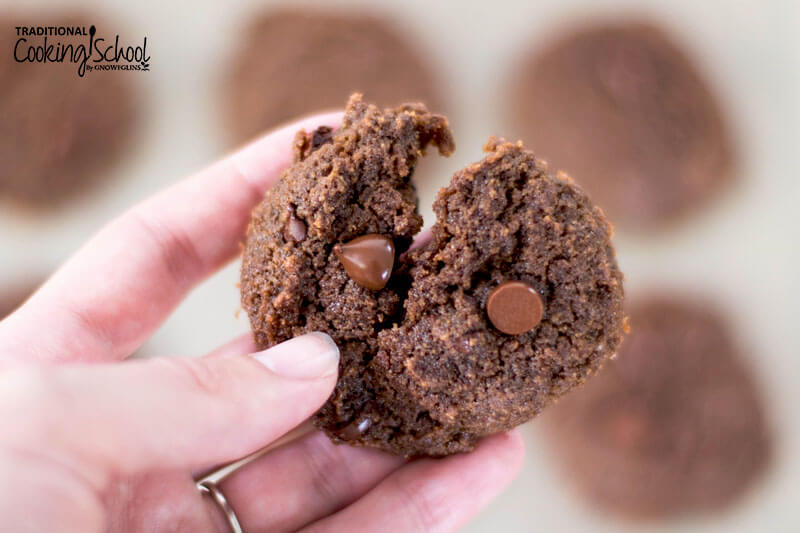
Nut-Free
Thankfully, it’s generally easy to omit nuts from a recipe! It will be harder if you’re grain-free as well. In that case, opt for coconut-based recipes like the ones below…
- No-Bake Salted Caramel Cookie Dough Bites {nut-free, grain-free!}
- Carrot Raisin No-Bake Treats (no sugar, grains, gluten, dairy, eggs, or nuts!)
- Paleo Double Chocolate Chip Cookies
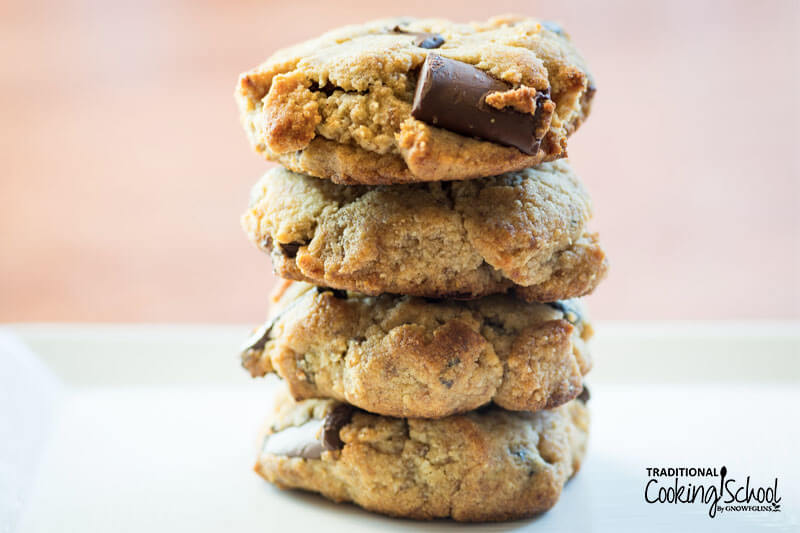
Sugar-Free
Should you eat sugar substitutes? I used to. But in just a few years of having erythritol and xylitol (sugar substitutes, sugar alcohols), my digestive system rebelled, causing me extreme discomfort and distress (you can read my story here). Now, to me, it’s just not worth it! Instead, I choose to have natural sweeteners (coconut sugar and maple syrup), but less of them.
The truth is, it’s hard not to overdo it with sugar substitutes. We think, “It’s not real sugar” so we have too much. We’re addicted to sweet, and if we keep eating these sweeteners with abandon (as many of us do/did), that addiction just gets stronger. And then our bodies rebel. With natural sweeteners in moderation, we still get the enjoyment, yet we’re not overdoing or running into problems because of artificial/substitute sweeteners.
You can also opt for recipes sweetened using fruit such as dates or raisins, like these GAPS Date Cookies. Here’s how to use raisins as a frugal sweetener!
That said… if you would like to use sugar substitutes in moderation, I do have some tips for you.
It’s much easier to use recipes designed around stevia, instead of substituting stevia for sugar. However, if you want to try to substitute yourself, keep in mind that it usually works well in recipes calling for dry sweeteners, and that a general rule of thumb is 1 teaspoon stevia (powder or liquid) for each cup of sugar. (More conversions are here in this handy chart.)
Stevia strength varies widely according to brand, so adjust to taste depending on what brand you choose (I like Sweet Leaf).
You can also use erythritol (another sugar-free sweetener) in place of sugar at a 1:1 ratio, although this should be enjoyed even more sparingly than stevia. I share more sugar-free baking tips and advice for using erythritol in this post: Are Xylitol and Erythritol Healthy? #AskWardee 080.
Here’s a sugar-free (sweetened with a combination of stevia and erythritol) and grain-free cookie recipe from TCS Contributing Writer Lindsey Dietz: Sugar-Free Chocolate-Dipped Shortbread Cookies.
Do you have family heirloom cookie recipes that you have made healthy? How do you make yummy and healthy cookies?
Be sure to subscribe to my channel on YouTube! Go here to subscribe.
...without giving up the foods you love or spending all day in the kitchen!

2 free books:
Eat God's Way
Ditch the Standard American Diet, get healthier & happier, and save money on groceries...
We only recommend products and services we wholeheartedly endorse. This post may contain special links through which we earn a small commission if you make a purchase (though your price is the same).
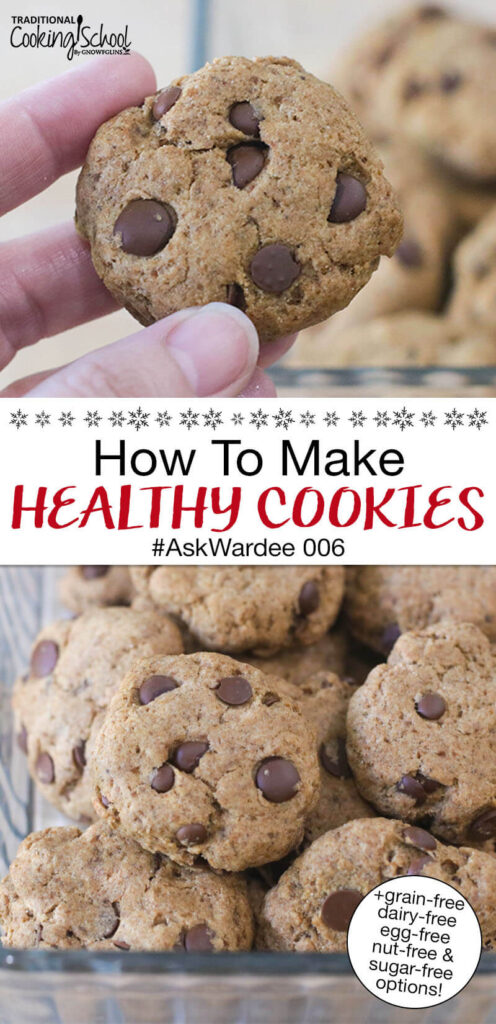
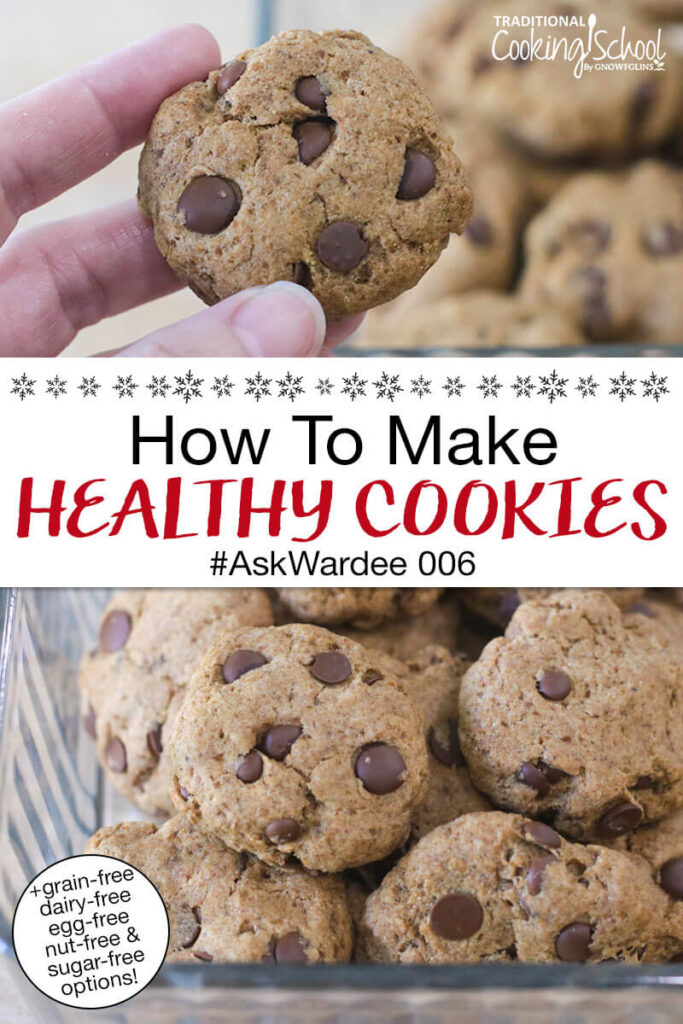

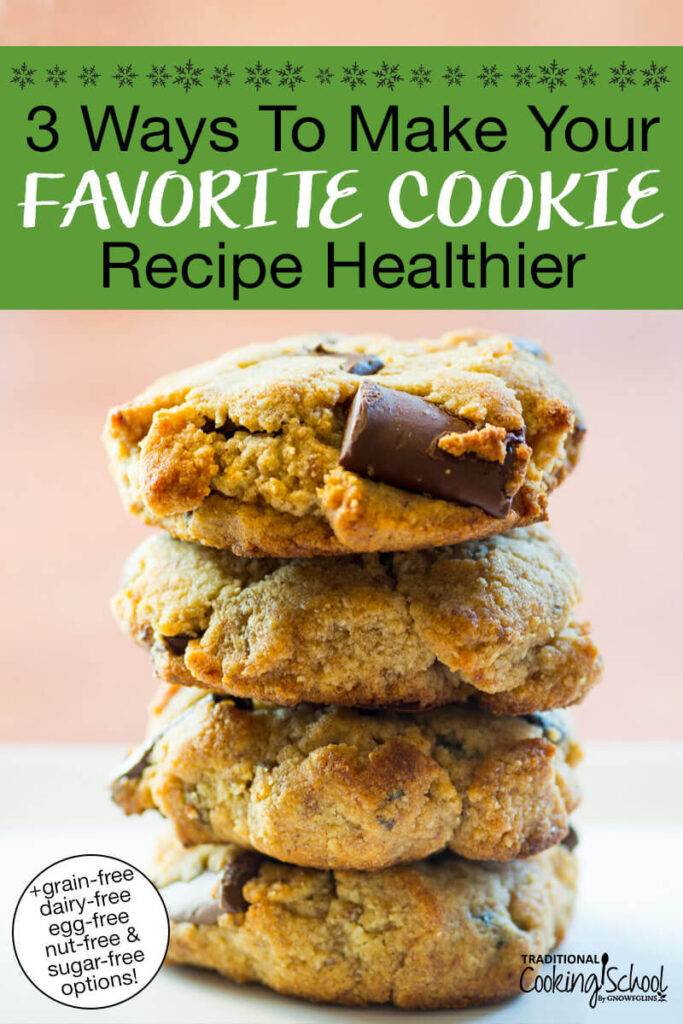
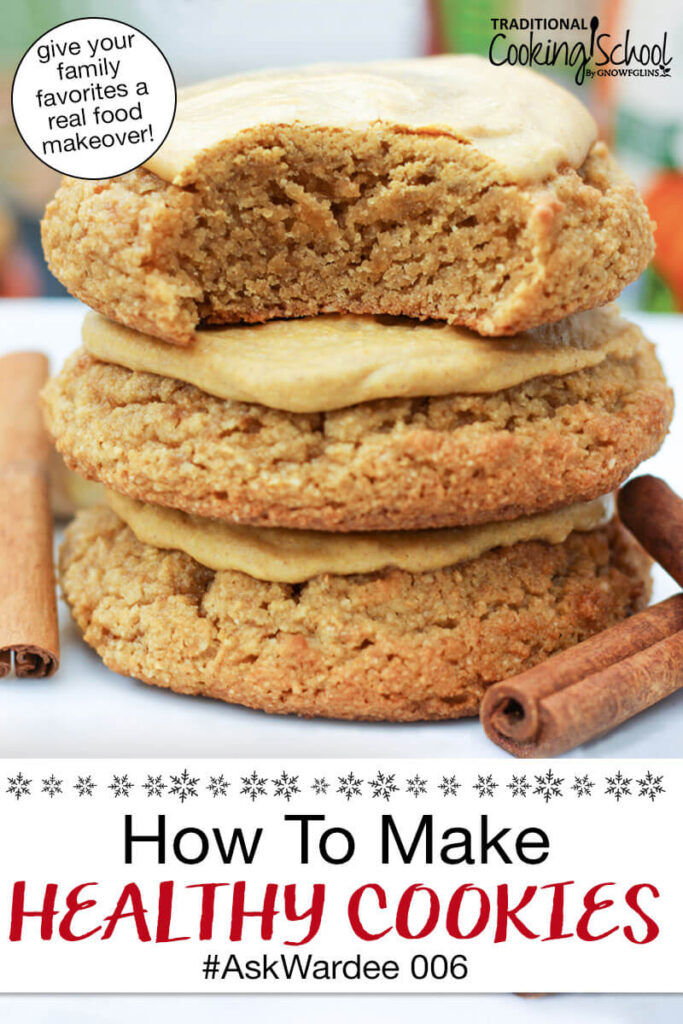


Leave a Reply